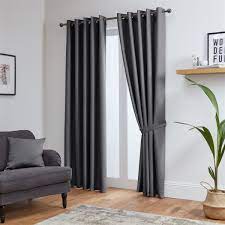
Curtains are more than just window coverings. They can also add style, personality, and comfort to any room. But with so many fabrics to choose from, how do you know which one is best for your curtains? The answer depends on several factors, such as the design goal, the maintenance level, and the insulation or sound absorption needs of the space. Here are some tips to help you choose the best fabric for your curtains.
The best fabric for your curtains depends on several factors, such as the design goal, the maintenance level, and the insulation or sound absorption needs of the space.
There are two main types of fabrics for curtains: sheer and opaque. Sheer fabrics are light and airy, and they allow natural light to filter through. They are ideal for creating a soft and romantic look, or for adding some privacy without blocking the view. Opaque fabrics are heavier and denser, and they block out most or all of the light. They are ideal for creating a cozy and dramatic look, or for adding more privacy and insulation.
Some fabrics can be both sheer and opaque, depending on how they are woven or treated. For example, cotton can be sheer or opaque, light or heavy, plain or printed. Cotton is one of the best fabrics for curtains in both a traditional or modernized space. It is versatile, durable, easy to care for, and breathable. It can also be blended with other fibers to create different effects.
Another factor to consider when choosing the best fabric for your curtains is the maintenance level. Some fabrics are more prone to wrinkles, fading, shrinking, or staining than others. Polyester is a low maintenance fabric that is durable, affordable, and resistant to wrinkles and fading. However, it may not hold the shape of the fold well, and it may not be very breathable.
A third factor to consider when choosing the best fabric for your curtains is the insulation or sound absorption needs of the space. Some fabrics can help keep your room warm in winter and cool in summer by blocking or reflecting heat. They can also help reduce noise by absorbing sound waves. Velour or velveteen is one of the best fabrics for sound absorbing curtains. It is usually made from recycled polyester fiber that has a soft and plush texture. It can also create a luxurious and elegant look.
Once you have chosen the best fabric for your curtains, you need to know how to hang them properly to achieve the desired look and function. Here are some steps to follow:
Q: What fabrics hang the best?
A: Some fabrics have a natural drape that makes them hang beautifully without much effort. Linen, silk, and velvet are some examples of fabrics that hang well. They are also luxurious and elegant fabrics that can add sophistication to any space.
Q: What fabrics can keep the cold out?
A: Some fabrics can keep the cold out by creating a barrier between the window and the room. Suede, velvet, tapestry, or tweed are some examples of fabrics that can keep the cold out. They are also thick and heavy fabrics that can create a cozy and warm look. You can also use a thermal or blackout lining to add more insulation to your curtains.
Q: What fabrics are easy to care for?
A: Some fabrics are easy to care for because they are resistant to wrinkles, fading, shrinking, or staining. Polyester, nylon, acrylic, or rayon are some examples of fabrics that are easy to care for. They are also synthetic fabrics that are durable and affordable. However, they may not be very breathable or eco-friendly.
Choosing the best fabric for your curtains can make a big difference in the look and feel of your space. The best fabric for your curtains depends on several factors, such as the design goal, the maintenance level, and the insulation or sound absorption needs of the space. Cotton, polyester, velour, linen, silk, and velvet are some of the best fabrics for curtains in different situations. Follow these tips and you’ll be able to choose and hang your curtains with confidence.

Dale is the colorful mind behind HuetifulHomes.com, where he shows you how to create a home that is as fun and fabulous as you are. He has a passion for color and a knack for DIY, with years of interior design experience he shares his tips and tricks on how to create a home that reflects your personality and style. He believes that color is the key to happiness, and he wants to help you make your home more Huetiful.